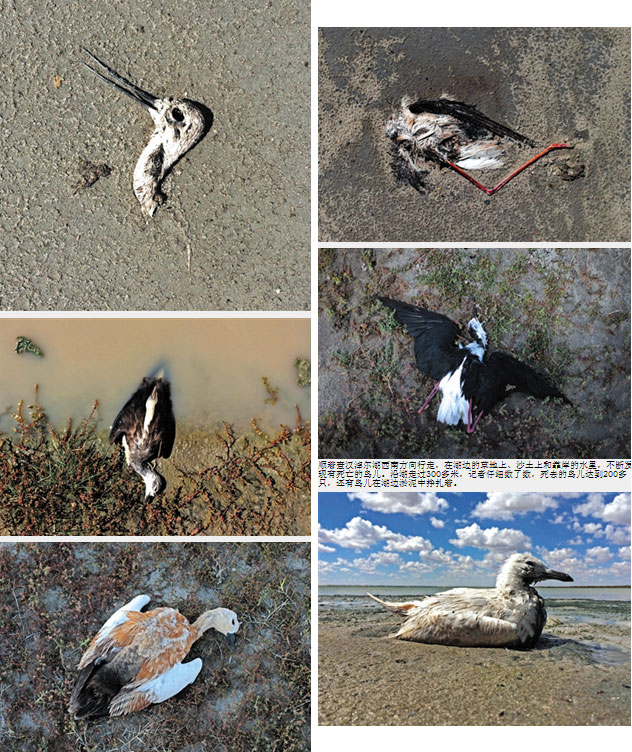Industrial pollution is behind the
deaths of tens of thousands of birds
on the pasture of Uxinzo town of
north China's Inner Mongolia
Autonomous Region, the Beijing Times
reported.
An industrial park was built in the
town ten years ago that discharges
sewage directly into the Tsagaan
Nuur Lake, through a huge pipe
buried underground, according to
local herdsmen.
To ensure that nobody would get
close, the park owners sent people
to stand in the two roads leading to
the sewage outlet during the
daytime.
However, when there were no guards
at night, many herdsmen saw sewage
water run into the lake. According
to the herdsmen, the smell from the
water was overpowering.
In July, tens of thousands of birds
were found dead in the area, many of
which were rare birds under the
national level protection. Some
herders said that government
authorities had sent people to
collect and bury the dead birds at
intervals.
Herdsman Bulgoude said that the
environment has been deteriorating
over the years. Many wild birds and
plants have died, and the
underground water level has drawn
down. Local residents have to dig
wells as deep as 200 meters to hold
water.
Heavy pollution in Uxinzo town is
not a single case in the vast Inner
Mongolia. Days ago, the Beijing
Times reported a sewage lake in
Tengri desert. Factories discharged
untreated sewage into the desert,
and a sewage lake formed. The
over-exploitation of underground
water also damaged the ecosystem of
the surrounding area.
Mu Guangfeng, from the environmental
protection ministry, who is in
charge of environmental evaluation,
said the water under the deserts is
formed over hundreds of millions of
years. Once the water gets polluted,
there is no way to restore it.



